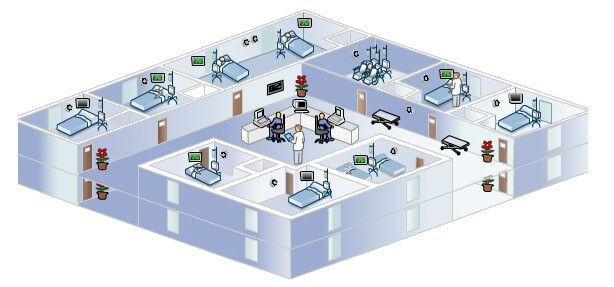“People can be exposed to Radio Frequency (RF) radiation from both natural and man-made sources.”
Natural sources include:
- Outer space and the sun
- The sky – including lightning strikes
- The earth itself – most radiation from the earth is infrared, but a tiny fraction is RF
Man-made RF radiation is used for many different things, such as
- Broadcasting radio and television signals
- Transmitting signals from cordless telephones, cell phones and cell phone towers, satellite phones, and 2-way radios
- Radar
- WiFi, Bluetooth, RFID Antennae
- Cooking food (in a microwave oven)
- Heating body tissues to destroy them in medical procedures
- “Welding” pieces of polyvinyl chloride (PVC) using certain machines
- Millimeter wave scanners (a type of full body scanner used for security screening)
Some people can have significant RF exposure as part of their jobs. This includes PVC welders, people who maintain antenna towers that broadcast communication signals, and people who use or maintain radar equipment.
Most people are exposed to much lower levels of man-made RF radiation every day due to the presence of RF signals all around us. They come from radio and television broadcasts, WiFi and Bluetooth, cell phones (and cell phone towers), and other sources.
Passive RFID Systems
The RFID tag is passive, insofar as it does not have an in-built energy source. A tag alone therefore emits no waves and poses absolutely no danger.
The tag communicates when it comes within the electromagnetic field of a reader. It is this reader which emits electromagnetic waves at a certain power.
Depending on the RFID technology, these readers may emit waves in three frequency bands: 125 kHz for very low frequency (LF) readers, 13.56 MHz for high-frequency (HF) readers and 900 MHz for ultra-high-frequency (UHF) readers.
The impacts of these waves on the human body therefore depend on the frequency band used. The electromagnetic fields generated by the readers have been measured in laboratory conditions, as recounted in a report by AFSSET, the French agency for safety in the environment and at work, renamed Anses in 2010. The field emitted in the LF and HF bands quickly fades and is only significant in the immediate vicinity of a reader. In any case, this radiation remains lower than the threshold limit value for humans recommended by the ICNIRP, the International Commission on Non-Ionizing Radiation Protection (maximum permitted magnetic field = 400 nT for HF technology and 105 nT for UHF).
Although, in UHF frequency bands, the magnetic fields span greater distances, measurements have shown that the radiation does not exceed the threshold limit values.
So for individuals who are only sporadically exposed to waves emitted by RFID readers, the risk is minimal. AFSSET recommends maintaining a minimum distance of around 20cm from the readers at all times.
An RFID tag, as described above, consists only of an antenna and a chip. It does not have an in-built energy source and can only emit waves if it is powered by the field of a reader. If the tag is fitted with a battery, it becomes active, and can communicate even when outside of the field of a reader. Such tags are used for short-range communication and serve as relays to forward the data read to the remote reader. These active RFID tags tie in with the concept of sensor networks. They pose a different problem. The frequency band used ranges from 900 Mhz to 2.4 GHz and comes in addition to the WiFi spectrum. However, the waves from active RFID tags are emitted at very low power and have a short range. Their impact is also therefore limited.





